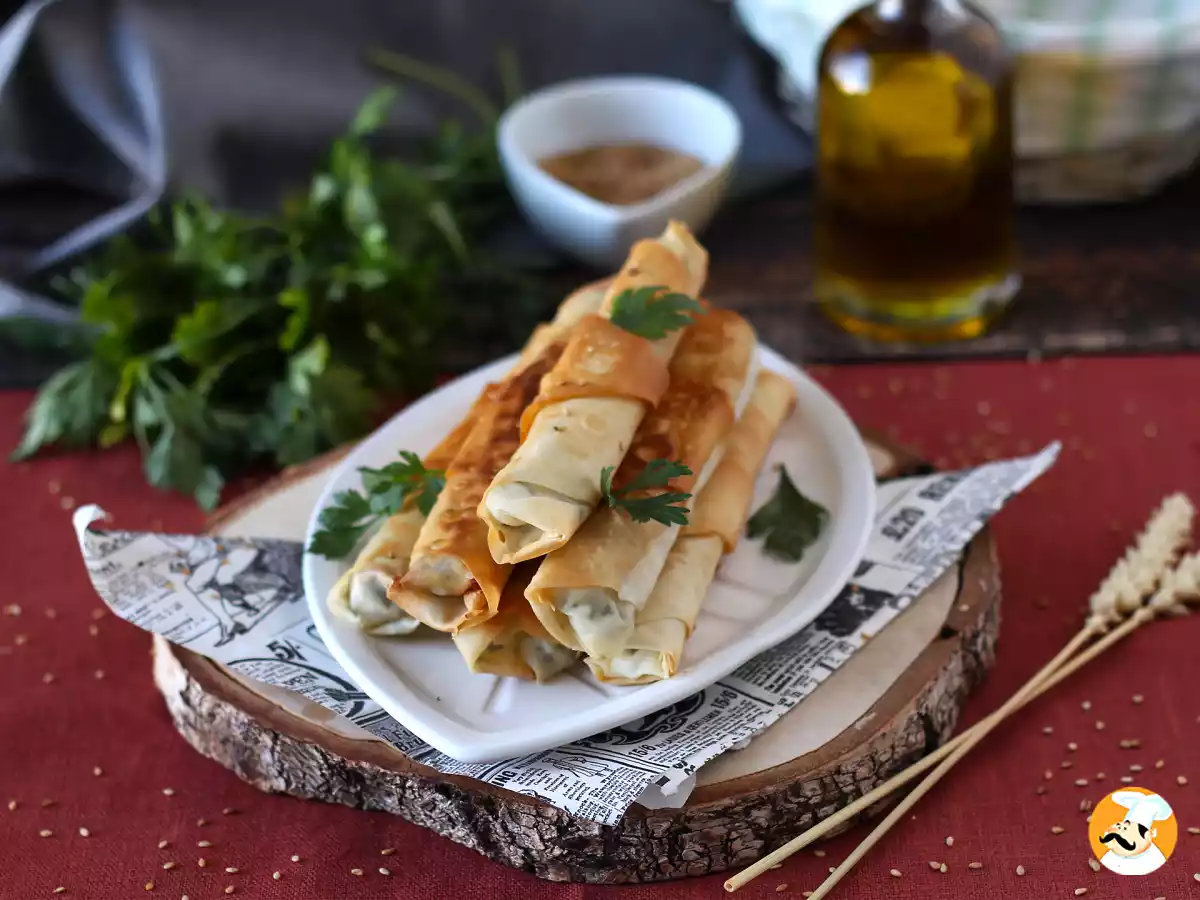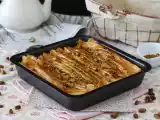Discover all the secrets of the thinnest dough in the world!

Imagine a pastry so thin it almost looks like a veil, crispy on the outside and delicate on the inside. Welcome to the world of phyllo dough (also known as filo), a magical ingredient capable of transforming any dish into a true work of culinary art. From the finest desserts to the tastiest savory pies , phyllo dough is an invaluable ally in the kitchen. Let's discover together the history, characteristics and many uses of this precious ingredient.
A little history on phyllo dough
The origins of phyllo dough date back to the Ottoman Empire, where it was prepared by hand in very thin sheets . The term " phyllo" comes from the Greek word "phyllon, " meaning "leaf, " a name that perfectly describes the delicacy and thinness of its layers. Traditionally, it was handmade by rolling out the dough until it was almost transparent, a process that required great skill and patience.
Kitchen use of phyllo dough
Phyllo dough is extremely versatile and is used in both sweet and savory preparations. Because of its crisp texture, it is perfect for pies, strudels, rolls and finger foods. Here are some of the most common uses:
- Desserts : In desserts such as baklava, layers of phyllo are alternated with chopped nuts and sugar, then dipped in a syrup of honey and spices.
- Savory Dishes: In Greek cuisine, phyllo dough is used for spanakopita, a savory pie with spinach and feta cheese. In Middle Eastern countries, it is used in börek, dumplings filled with meat, cheese or vegetables.
- Rolls and Snacks: It is perfect for creating crispy rolls filled with meat, cheese, vegetables or fruit, often served as appetizers or finger foods.
Differences with puff pastries
While puff pastry is made by a rolling process that incorporates layers of butter, phyllo pastry contains no fat between the layers, making it much thinner and lighter.
Differences with brisée dough
Brisée dough, with its dense, buttery texture, is perfect for rustic tarts and pies that require a firm, crumbly base. Phyllo, on the other hand, is a very thin, almost transparent pastry with an airy, crisp texture.
Benefits of phyllo dough
- Lightness and Low Fat Content: Unlike puff pastry and brisée, which are rich in butter, phyllo dough is incredibly light. The basic dough is composed only of flour, water and a pinch of salt, making it an ideal choice for those seeking a touch of crunch without weighing down the dish. Fat is added during baking, if desired, to create golden, fragrant layers.
- Low calories, lots of flavor: Thanks to its thinness and the absence of fat in the dough, phyllo dough is perfect for those who want to enjoy tasty dishes without weighing themselves down.
- Great for food intolerances: Due to its basic dairy-free composition, phyllo dough is an excellent choice for those who follow vegan diets or have lactose intolerances. By using vegetable fats instead of butter during cooking, tasty and healthy preparations can be achieved that are suitable for all dietary needs.
- Unique Crunchiness: Its thin texture sets it apart from other pastas, giving it an unmistakable crunchiness. A light and pleasant sensory experience, perfect for those looking for something different.
Why choose phyllo dough?
Phyllo dough is a versatile and distinctive element in the kitchen, capable of transforming the simplest dishes into elegant and crispy creations. Its historical origins and difference from other pastas make it a fascinating and popular choice in many culinary traditions. In addition, its nutritional benefits make it a light and tasty option for those seeking healthier alternatives without sacrificing the pleasure of taste.
Some tasty recipes to make with phyllo dough
- Pistachio cheesecake with phyllo dough
- Crinkle Cake
- Crinkle cake with goat cheese and honey
- Cheese Börek
- Scallops sea shells
- Spanakopita

Spanakopita, the greek pie with spinach and feta super easy to prepare

Pistachio baklava cheesecake, crispy and melting

Crinkle cake, the super crispy and easy to make cake - easy turkish laz borek

Savory crinkle cake with goat cheese and honey

Turkish börek: crunchy and tasty stuffed filo with spinach and cheese

Börek, turkish bricks with feta and parsley

Crispy scallops in filo pastry
 Daniele Mainieri
Daniele Mainieri
Comments